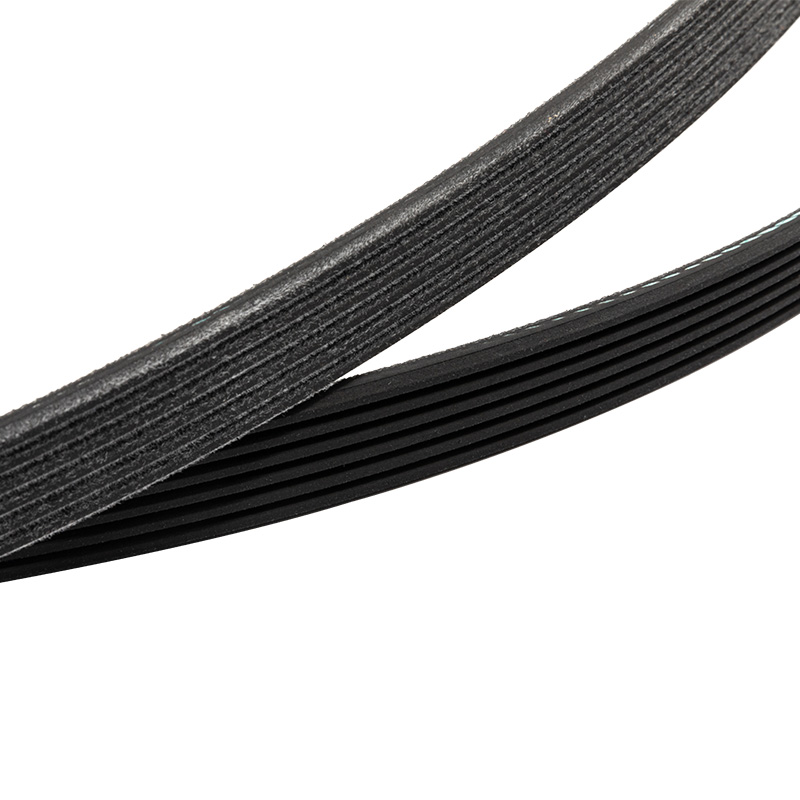The V-ribbed design of EPDM rubber belts is characterized by a series of longitudinal ribs that run along one side of the belt. These ribs are meticulously engineered to match the grooves of the pulleys they interact with, significantly increasing the contact surface area. This enhanced contact is crucial for maximizing friction between the belt and the pulleys, which directly reduces the likelihood of slippage. By minimizing slippage, the belt ensures that the rotational force generated by the engine is efficiently transferred to various components, such as the alternator, water pump, and air conditioning compressor. This efficient power transfer is critical for maintaining the performance and reliability of the engine and its auxiliary systems.
EPDM rubber is highly valued for its flexibility, which plays a pivotal role in the belt’s ability to conform precisely to the pulleys’ grooves. This flexibility allows the V-ribbed belt to navigate tight bends, varying pulley diameters, and complex engine layouts without compromising its fit. The precise conformity to the pulleys ensures that the belt remains aligned and maintains consistent contact with the grooves, even under varying operational conditions. This alignment is essential for minimizing energy losses that could occur due to belt misalignment or deflection, thereby enhancing the overall efficiency of power transmission within the engine.
The internal structure of EPDM rubber V-ribbed belts typically includes high-strength tensile cords, often made from materials like polyester or aramid fibers. These tensile cords provide the belt with exceptional tensile strength, allowing it to withstand the significant forces generated during engine operation. This strength is crucial for maintaining the belt’s tension over time, preventing elongation and ensuring that the belt remains taut around the pulleys. Proper tension is vital for effective power transmission, as it reduces the potential for energy loss caused by belt slackness or stretching. By maintaining consistent tension, the belt ensures that power is delivered efficiently to all engine components.
EPDM rubber is renowned for its resistance to a variety of environmental factors, including heat, ozone, and aging, which are common in automotive environments. The material’s durability ensures that the belt maintains its structural integrity and performance characteristics over extended periods of use. This resistance to wear is particularly important in automotive engines, where belts are exposed to continuous high temperatures, exposure to chemicals, and varying loads. The ability of EPDM rubber to resist degradation under these conditions means that the belt can continue to transmit power efficiently without requiring frequent replacements, thus contributing to the overall longevity of the engine system.
One of the often-overlooked benefits of the V-ribbed belt design is its contribution to noise reduction. The specific configuration of the ribs and grooves helps to minimize belt misalignment and fluttering, which are common sources of noise in automotive engines. By reducing these issues, the belt operates more quietly, which is especially important in modern vehicles where noise reduction is a key factor in overall driver comfort and vehicle refinement. A quieter belt operation not only enhances the driving experience but also indicates efficient power transmission, as excessive noise can often be a sign of inefficiencies or potential issues within the engine system.
Epdm Rubber Automotive V-Ribbed Belts




 English
English 中文简体
中文简体

 View More >>
View More >> View More >>
View More >> View More >>
View More >> View More >>
View More >> View More >>
View More >> View More >>
View More >> View More >>
View More >> View More >>
View More >> View More >>
View More >> View More >>
View More >> View More >>
View More >> View More >>
View More >>
